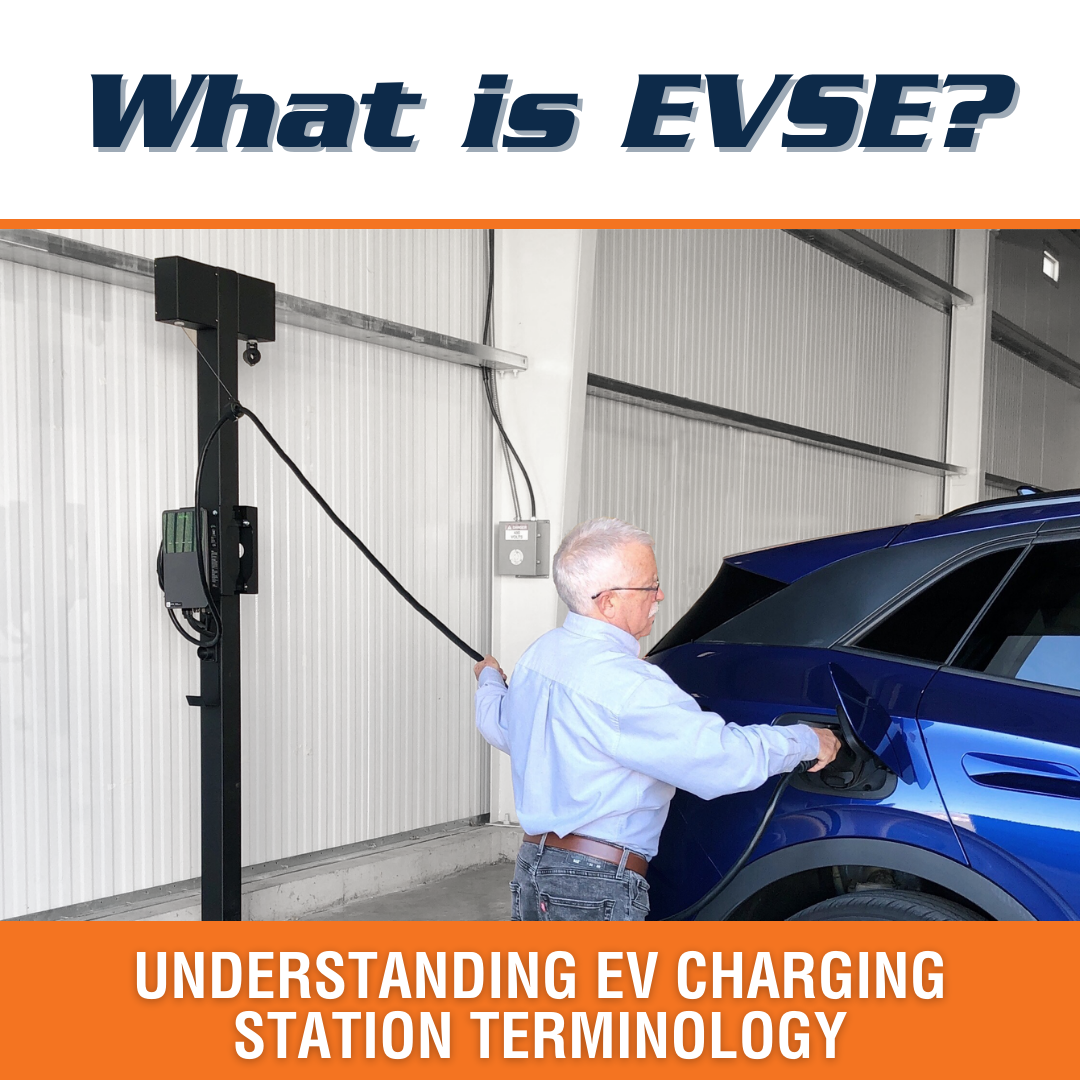We use cookies to make your experience better. To comply with the new e-Privacy directive, we need to ask for your consent to set the cookies. Learn more.
What Is EVSE? Understanding EV Charging Station Terminology
These days, many types of organizations may invest in electric vehicle (EV) charging stations. Utility companies operate public EV charging stations. Fleet owners may install a whole system to keep their EVs ready to roll. But increasingly, owners of commercial properties — and the businesses they rent to — are installing EV charging stations, too.

There are plenty of benefits to hosting an EV charger at your facility. Notably, owned EV charging stations can create a new revenue stream, as EV owners pay for use. Charging stations may also get more customers through the door. The fastest of today’s EV chargers (DC fast charge) take up to 45 minutes to bring an EV battery to 80% capacity. Drivers may spend that time browsing in the nearest business — which, if you own the charger, is yours.
All of this suggests more and more businesses are getting interested in building EV charging stations. Unfortunately, the subject can be confusing when you start looking into it. It’s full of acronyms and initialisms — and the most common of them, probably, is EVSE.
So what is EVSE? Here’s a quick EVSE definition, along with explanations of the most common types of EVSE.
What Is EVSE?
EVSE stands for electric vehicle supply equipment, which includes all the equipment required to charge an electric vehicle battery. Common names for EVSE include charging station and charging dock.
While you’re generally more likely to find references to “charging stations” than “EVSE,” technical authorities prefer the latter term. For example, the National Electrical Code (NEC) uses EVSE to refer to EV chargers and support equipment. So does the National Electrical Manufacturers Association (NEMA), which describes EVSE as consisting of “electrical conductors, related equipment, software, and communications protocols that deliver energy efficiently and safely to the vehicle.”
But what does NEMA mean by “related equipment?” Here are the essential EVSE products you need to build an EV charging station for your business:
1. EV Chargers
For commercial charging stations, these are typically either Level 2 chargers (240 volt AC) or fast chargers (480 volts DC and up). Chargers typically include the cables and connectors that connect them to cars.
Note, however, that other electrical cables — like those that carry power from the grid to the charger — are not generally considered EVSE. (The NEC differentiates between the “power-supply cord” and the “output cable to electric vehicles.”)
2. EV Charger Stands
Most Level 2 chargers are designed to be mounted to a wall or an independent stand, which are not included with your purchase. As a necessary support for all non-wall-mounted chargers, however, charger stands fall under the category of EVSE. The most common type of EV charger stand is a pedestal, which leads to another question:
What are EVSE charging pedestals?
If you can’t mount an EV charger to a wall, you need a free-standing post. An EVSE charging pedestal is just such a charger stand, which features tall, narrow design to protect chargers, provide convenient access to connectors, and occupy a minimal footprint all at once.
EV Charger Pedestals from BHS, Inc. support two EV chargers at once, all on an indoor/outdoor steel post with a protective powder-coat finish. They also ship with integrated cable management systems. That brings us to the next item on our list.
3. EV Cable Management Systems
Some EV charging installations leave cables to dangle on the road. That’s not the best approach. Cable management systems keep cables elevated and controlled to prevent equipment damage and injury to users. But how do these systems work? In other words:
What are EVSE cable management solutions?
An EVSE cable management solution is any device that keeps charging cables out of harm’s way between uses, preferably without too much manual work (like winding cables around a bracket). The simplest solution is a spring-operated cable retractor, which automatically elevates cables while also providing quick, convenient access to charging connectors.
EV Charger Cable Retractors from BHS house an auto-retracting reel within a steel, powder-coated housing. They’re suitable for indoor or outdoor use, with models available for mounting on walls or charger stands. These cable management solutions are also integrated into every BHS EV Charger Pedestal, creating a turnkey solution for mounting your core EVSE: the charger itself.
Ready to bring the benefits of EVSE to your operation? Contact the BHS sales team to discuss EV charger support equipment for any EV charging station.
